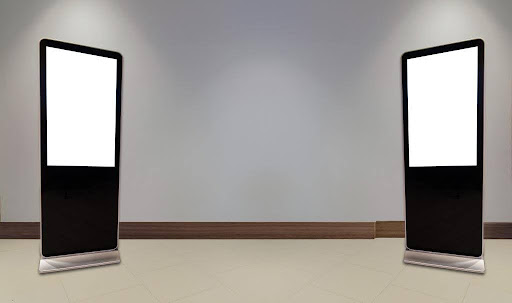Whether you are dealing with industrial or residential electrical installation work, you must ensure that all the processes happen in an appropriate manner. Proper property electrical installations should take into account supply limitations and load requirements in an economical and simple way. This can help ensure maximum protection of human life while preventing property fires. It also facilitates seamless installation, maintenance, and repairs. Let’s look at the ten golden foundations of good electrical installation work.
Table of Contents
Take the Power Supply Into Account
The best starting point is knowing the difference between high voltage and low voltage energy. Pay attention to other power supply characteristics, such as the number of conductors, frequency value, nature of current, and maximum allowable current. You can also determine your power supply and number of circuits by looking at the nature and location of power demand, expected loads in circuits, and the daily and annual demand variations.
Select Cable Runs Wisely
When positioning cables and conductors, ensure you do not subject them to deterioration. Conditions such as moisture, mechanical damage, oil, heat, vibration, and corrosive substances can pose a threat to your cables. Some appropriate electric wiring cables to consider if you can’t avoid such conditions include:
- Mineral insulated cables: They can stand against oil, steam, water, and extreme temperature.
- Cross-linked polyethylene (XLPE) cables: These cables consist of a thermostat material, making them highly resistant to moisture, heat, and chemicals.
- PVC or LSF mineral insulated (MI) cables: They are highly resistant to chemicals resistant to copper.
- PVC/SWA sheathed cables: These cables are highly resistant to most conditions, including a temperature of up to 70 degrees Celsius.
For operating temperatures above 150 degrees Celsius, consider using heat-resistant cables, such as varnished glass fiber. Ensure that the conductors you use have high melting points like chromium copper, nickel, or silver-plated copper.
Think About Fire Spread Prevention
According to the U.S. Fire Administration, more than 24,200 residential building electrical malfunction fires happen each year. This calls for proper measures to prevent instances of electrical fires as well as contain their spread.
During electrical installation, your electrician should not leave any openings on walls and floors of a structure when installing trunking, conduits, or cables. It is easy for the fire to spread and cover the entire building through vertical ducts or cable shafts. If it is a must to create holes or slots in the wall or floor for running cables, ensure you cover them using non-combustible material.
It is advisable to install non-combustible fire barriers inside vertical cable trunking or ducts at each level. The barriers will help hinder the fires from spreading while preventing hot air from pooling at the duct’s top.
Keep Emergency Supply in Mind
Certain commercial areas, like hospitals, call for standby power supplies to prevent power supply interruptions to life-saving machines or other equipment. Your electrical installations should consider the chances of an automatic change over or connection of a standby power supply to those critical areas.
Proper Electrical Tools
A workman’s tools speak a lot about them. Electricians can only perform their work effectively if they have a reliable collection of well-maintained tools. On top of the common hand tools, ensure you supply your electrician with additional tools like stocks and dies, bending machines, specific power tools, and electric screwing machine, among others. The tools will immensely contribute to attaining good craftsmanship, which is the primary goal.
Conduits and Cables Identification
According to IEE wiring regulations, electricians must mark wiring cables to make it easy for recognition during testing, inspection, modification, or repair. IEE Regulations also feature detailed information about standardized cable colors.
Electrical experts use black, gray, and brown colors for phase conductors in fixed cables. You can mostly find yellow and green colors in protective conductors, while blue represents the neutral.
If you modify your writing system and change one of the phase colors by installing a new wire, you are required to put up a warning sign. The sign details the mixing of colors and wiring changes that have happened to the electrical system. Remember to label distribution cables and incoming power supply based on the type of power supply, the voltage, and the number of phases.
Safety Measures
Safety must be a top priority, considering how risky electrical installation work can be. Before engaging in any electrical installation service, learn about the top safety protocols and measures to ensure the overall well-being of building occupants and workers. A reliable electrical provider will adhere to the industry’s best standards, prioritize safety, and leverage proper safety techniques and equipment. The professional should provide protection against the following:
- Overvoltage
- Thermal effects
- Indirect current
- Over currents
- Fault currents
Bunching of Cables
Bunching incoming and outgoing cables in the same armored or conduit cable can help prevent energy losses due to excessive induction. You can bundle single-core cables that are within the same trunking or conduit to protect them and allow the current to balance each other in regard to induction, preventing adverse impacts.
When dealing with AC circuits, ensure that you do not surround any single conductor with a magnetic material like steel trunking, conduit, or armoring. The reason is a single-core cable with alternating current often induces a current in the surrounding metal. As a result, the current starts to hinder the smooth flow of the original current.
Prioritize Durability
Overheating can cause extreme damage to the wiring system, leading to hazardous accidents. This means you must emphasize quality and durability during the entire electrical installation process to avoid the issue. Keep in mind that electric currents should go through the wiring system at maximum level without causing it to overheat.
Electricians can boost the durability of electrical components by selecting and buying quality sheathing, cable material, and wire material. Also, try not to expose the wires and cables directly to chemicals, harsh fumes, or moisture for an extended period of time.
Pay Attention to Compatibility
Different devices work well with different and specific voltage levels. Some modern devices may fail to be compatible or harmoniously connect to older electrical systems. This makes verifying compatibility crucial before purchasing electrical systems and devices.
Electrical installation is a critical project in every property that you must undertake with utmost care and precision. Depending on the weather conditions and other elements in the area, it is best to ensure that you work with suitable wiring materials and equipment to prevent overheating and hazardous electrical fires. Avoid shortcuts and engage a reputable electrical installation service to get durable results.





